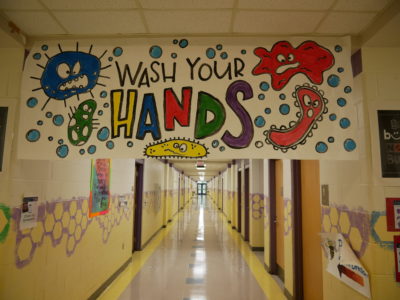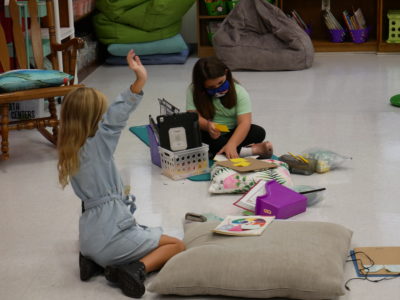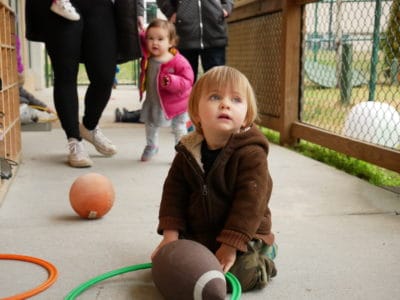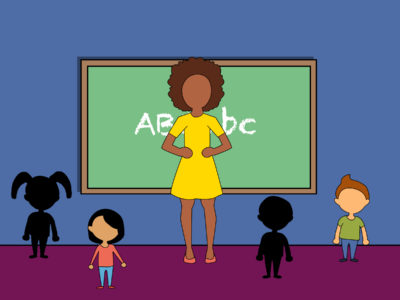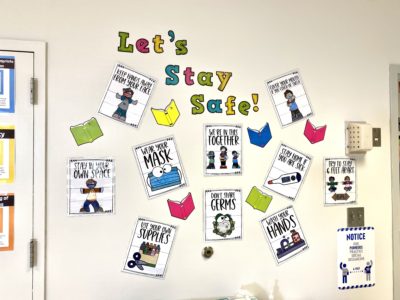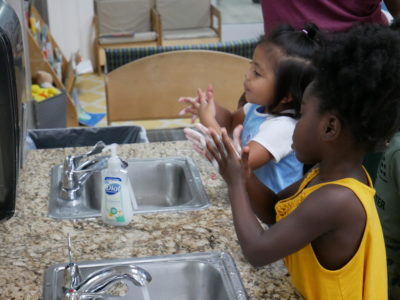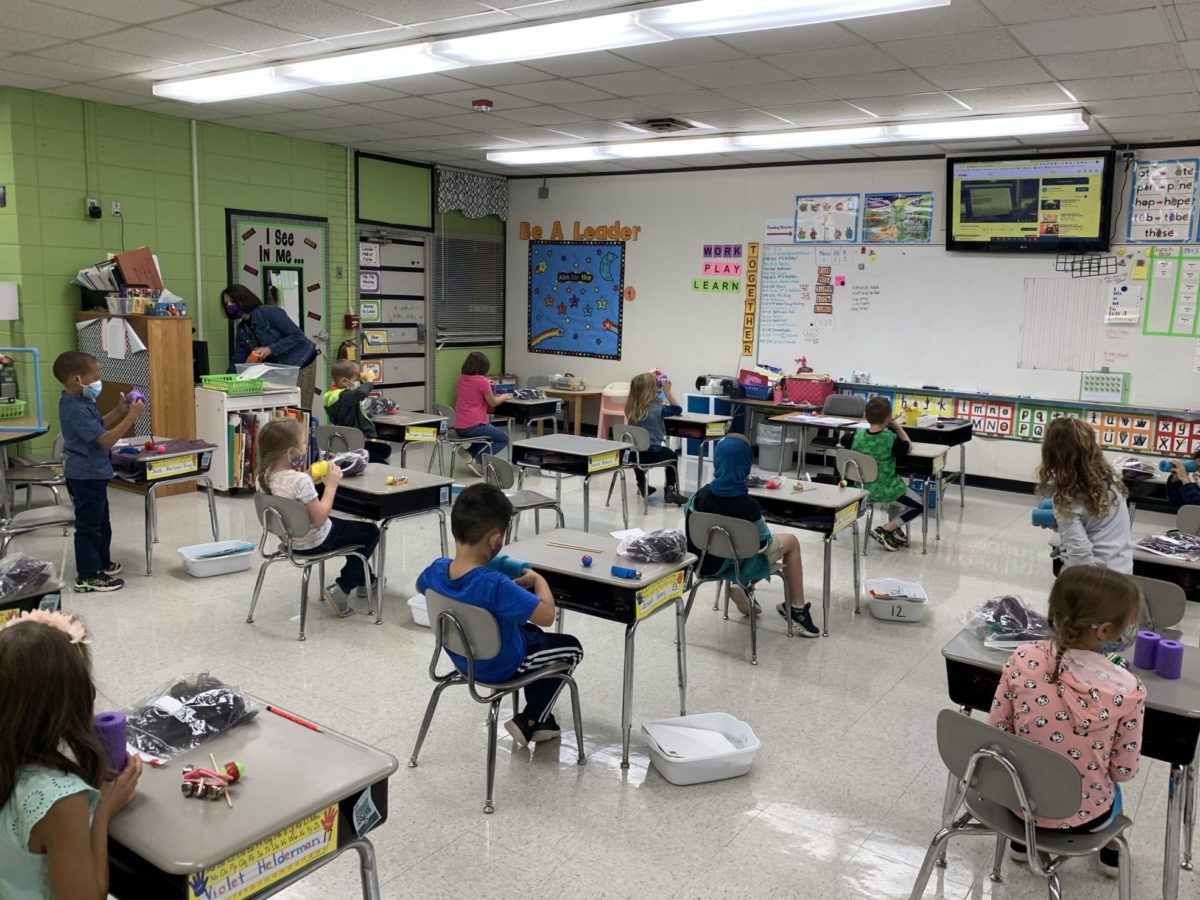
The spring’s remote learning was emotionally tough for Gabriela Vazquez-Carmona, a sixth-grader at Tuttle Elementary in Catawba County.
“I wanted to come back. I felt very isolated,” Gabriela said.
Each week, she learns online for three days and comes to school for two, a schedule she now finds normal. This hybrid model of online and in-person learning is what the state calls Plan B, the model under which about half of the state’s public school districts, including Catawba, started the school year.
“It has been a lot of happiness brought to my life because I was able to see friends I haven’t seen for a long time,” Gabriela said of the in-person classes.
Teachers and administrators echoed her sentiment when EdNC took a virtual tour of the school in October: In-person interactions have been a source of joy and connection in an uncertain time.
“That’s been the biggest piece, just being thankful that we’re here,” said Shannon Hollar, a fourth-grade teacher. Hollar will welcome more students into her classroom later this month as the district’s K-5 classrooms go to in-person learning, also known as Plan A.
Even with masks, social distancing, and the stress of the pandemic, Hollar said she prefers the altered in-person environment to remote teaching. She cherishes small moments of learning and laughing.
“Keeping that in our forefront is, I think, keeping us positive,” she said. “When things happen at times we just cry and then we laugh about it. We make a joke, and we just keep going.”
The social and emotional component of learning and development, coupled with students’ academic needs, has kept district leaders asking how to safely bring students back to the classrooms since the beginning of the pandemic.
“Educationally speaking, I think it’s definitely worth it,” Superintendent Matt Stover said of the transition to Plan A, which means more students will be gathered in classrooms and some new students will be added to the mix from the district’s online model.
Yet all the factors, including local COVID-19 metrics, are constantly changing, he said.
As the district’s elementary schools welcome more students into buildings throughout the fall, Stover said in October that he was concerned about growing local infection rates, teachers’ capacities, and the complexities that quarantines present for the entire community.
“How long can our people continue to work like this and not have fallout?” Stover said. “… It’s kind of all day and all night. There’s no stopping.”
A phased approach to Plan A
The district’s school board voted in October to move K-5 students to Plan A, after Gov. Roy Cooper allowed the option for that age range. Young children are thought to be less likely to transmit the coronavirus, though the research is still unclear.
Most Catawba County kindergartners and first-graders were already in-person for four days a week because of additional space that allowed for social distancing.
Since the Plan A switch, about 135 second- and third-graders have changed their learning model. Of those, about 15 chose to switch to Catawba’s fully remote option, Online Catawba, said Shelly Black, the district’s elementary director.
“The rest chose to come back in the building, which is a true testament to the instruction that happens in the classroom and the connections our teachers make with our students,” Black said.
At the end of November, fourth- and fifth-graders will come back four days a week, with an additional set of new students switching models. Stover said phasing in a couple grades at a time was meant to allow the district to see how more students within the same amount of space affects individual classrooms, personnel, and quarantines.
Space
“Safety and sanitation is going to be the biggest issue,” said Mitzi Story, principal of Tuttle Elementary. “With more students in the building, there’s going to be more opportunity for them to get close together.”
Some of Tuttle’s classrooms allow for six feet between students, Story said, while others allow for about four and a half. Plexiglass shields separate children at tables, and turtle stickers keep them apart in hallways. Everyone wears masks, and lunch is in classrooms instead of the cafeteria. The school hired an additional custodian for extra cleaning.
Since the district’s elementary schools serve K-6 students, and only K-5 students are allowed to operate under Plan A, the district had to create an alternate bus route for sixth-graders, with more space for the social distancing required under Plan B.
Personnel
Story has received calls from parents looking to switch from virtual to in-person learning since the start of the school year, she said. She thinks that’s partly because of the rigorous nature of the district’s virtual option.
The virtual academy combines classrooms with students and teachers across the district’s 16 elementary schools. That has kept some teachers from having to do both in-person and virtual teaching. And though the majority of families are choosing in-person school, the remote option is still working for some.
“With four children, I just need to pick the most consistent schedule for us, and we’ve ended up liking it a lot,” said Amanda Watts, whose first- and third-graders are enrolled in Online Catawba. Although her children normally go to Sherill’s Ford Elementary, her daughter has a Tuttle Elementary teacher for third grade this year.
Watts also has a 3-year-old, who just started in-person preschool, and a 1-year-old. She’s able to work from home and has an in-home babysitter. “There are days where I question, why did I choose to keep them home, then days where it’s been really great.”
With fewer virtual students, Story has had to move around some teachers, who could opt to teach remotely at the beginning of the year. One online second-grade teacher moved to teaching fourth grade online, and one moved from first to second grade online.
“They didn’t have to go to a different building and do a face-to-face class, because we were able to work together as a district and figure out where we could combine some classes,” Story said.
Throughout grades, Fridays are still remote.
Hollar and Kati Chapman, another fourth-grade teacher, said that often means planning their in-person and remote lessons from 8 a.m. to 4 or 5 p.m.
“We really do push hard on Fridays,” Chapman said. “We mash out all the details, and all the hard stuff … so that during the week we’re able to just enjoy being here, and enjoy our kids, and enjoy each other.”
Quarantine
When EdNC visited remotely, one fourth-grade classroom had recently quarantined because of a COVID-19 infection in a teacher, who caught the virus outside of school. During quarantine, students switched to remote assignments.
The students were able to come back to school before the teacher. The class had a substitute teacher, the media coordinator was helping with students’ reading instruction, and Hollar and Chapman were jumping in to help with math, science, and social studies.
“It’s kind of a team effort,” Hollar said.
Hollar, Chapman, Story, and Stover all said quarantines have been hard on everyone, from filling in academic holes to communicating with parents who have to arrange child care.
“It’s kind of like a revolving door, and you never really know,” Chapman said. “The timelines are different. That’s really been the most complicated piece.”
So far, there have been positive cases and quarantines, but no spread within schools, said DeAnna Finger, the district’s assistant superintendent of curriculum and instruction.
As more students come into the building for more of the week, Stover said, more students might have to quarantine when a positive case occurs, and parents will have to rearrange their plans even more.
“It’s hard on the school to get coverage; it’s hard on parents,” he said, adding that, despite these challenges, he hasn’t received any complaints.
“Let me tell you, people know my name and number, they’ll let me know. I think I attribute that to, our community has shown us a lot of grace. I think they appreciate their kids getting to come to school.”


